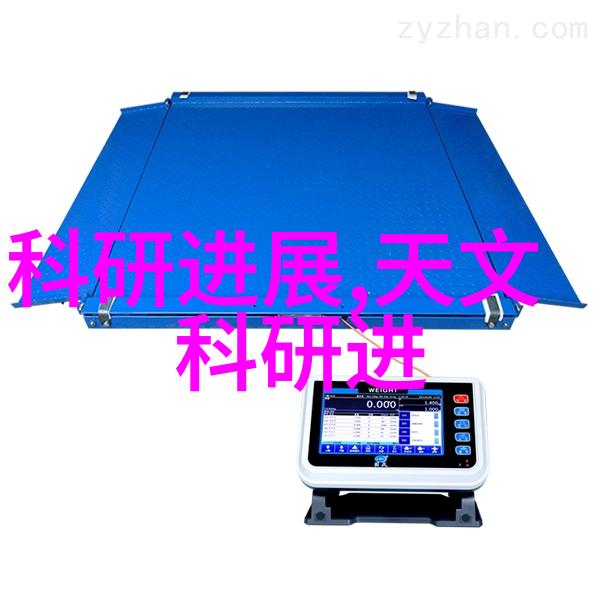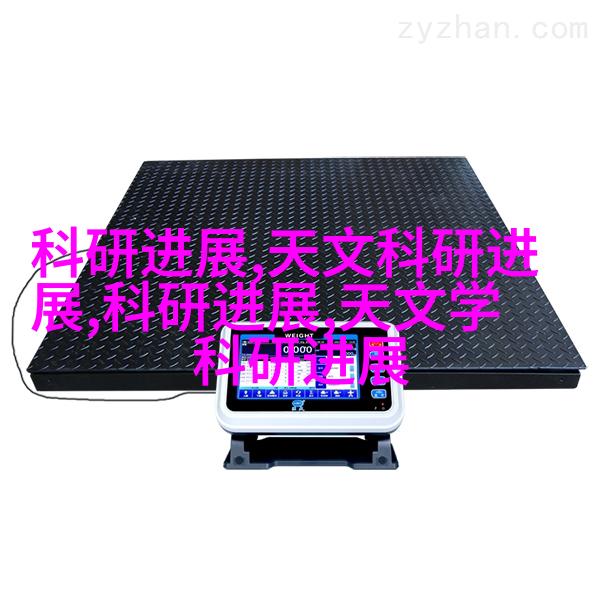新加坡国立大学香港科技大学等三位专家讲述仿生柔性复合材料
新加坡国立大学、香港科技大学等三位专家讲述仿生柔性复合材料

直播时间:2024年5月21日(周二)20:00-22:00
直播平台:

科学网APP
https://weibo.com/l/wblive/p/show/1022:2321325036435697959351
(科学网微博直播间链接)

科学网微博

科学网视频号
北京时间5月21日晚八点,iCANX Youth Talks第五十六期邀请到了新加坡国立大学翟玮,香港科技大学许钦,香港大学徐立之三位教授主讲,南方科技大学刘吉作为主持人,北京大学韩梦迪担任研讨嘉宾,期待你一起加入这场知识盛宴。
【嘉宾介绍】

翟玮
新加坡国立大学
多尺度制造策略用于强韧软材料
【Abstract】
Conductive hydrogels have emerged as versatile materials for flexible electronics and soft robotics, owing to their great stretchability and sensing capability. However, most hydrogels still encounter difficulties in meeting the demanding requirements of real-life applications due to the long-standing challenge of reproducing the excellent mechanical properties and multifunctionalities observed in natural soft tissues. For example, mammalian skin exhibits excellent tearing resistance and flexibility due to an intricate hierarchical structure of collagen fibers and fibrils. Similarly, the hierarchical organization of tendons endows them with high strength and flexibility, allowing them to endure mechanical stress and execute contractions and relaxations.
Natural soft tissues exhibit an exceptional combination of stiffness, strength, and toughness, owing to their intricate hierarchical composite structures. Firstly, as natural materials form through bottom-up growth, they are assembled from the most basic building blocks in a hierarchical manner. Secondly, their compositions feature (1) aligned stiff anisotropic fibers or particles, (2) connected by a soft matrix, and (3) a tight interface in between. This hierarchical organization, from molecular to macro scales, achieves a strong coupling between the constituents, fostering synergistic interactions across multiple length scales. Inspired by the hierarchical composite design in nature, we have developed various multiscale manufacturing strategies to produce strong and tough conductive organo-hydrogels with hierarchical structures. This involves a freeze-casting assisted solution substitution strategy, a facile combining strategy of self-assembly and stretch training, and a bottom-up shear-stress induced direct ink writing strategy. The strength of our materials has increased from 6.5 MPa to 54.8 MPa, while the toughness has also increased from 58.9 MJ/m3 to 260 MJ/m3, owning to multiple strengthening and toughening mechanisms at different scales. We have demonstrated the potential applications of our materials for monitoring sport behaviors in soccer training, and controlling artificial arms and robots for grabbing objects, etc. Hence, these studies showcase a model strategy that extracts the hierarchical composite design principles from nature and applies them for strong and tough soft materials. Being versatile and applicable in diverse material compositions, this multiscale manufacturing strategy shall also inspire future research on the design and fabrication of bioinspired materials.
导电水凝胶因其出色的可拉伸性和传感能力而成为柔性电子和软体机器人领域多才多艺的材料。然而,由于长期以来难以复制自然软组织中观察到的优良机械性能和多功能性,大多数水凝胶在满足实际应用的苛刻要求方面仍面临困难。例如,哺乳动物的皮肤由于胶原纤维和微纤维的复杂层次结构而展现出卓越的抗撕裂性和灵活性。同样,肌腱的层次化组织赋予它们高强度和灵活性,使它们能够承受机械应力并执行收缩和放松。
自然软组织由于其复杂的层次复合结构,展现出刚度、强度和韧性的卓越组合。首先,天然材料通过自下而上的增长方式,从最基本的构建块以层次化的方式组装而成。其次,它们的组成特点包括排列整齐的各向异性纤维或颗粒、由柔软的基质连接,以及两者之间的紧密界面。这种从分子到宏观尺度的层次化组织,在组分之间实现了强大的耦合,促进了多尺度的协同交互作用。受自然界层次复合设计启发,我们开发了多种多尺度制造策略,以生产具有层次结构的强韧导电有机水凝胶。这包括一种冷冻铸造辅助溶液替代策略、一种简便的自组装和拉伸训练结合策略,以及一种自下而上的剪切应力诱导的直接墨水写入策略。我们材料的强度从6.5 MPa提高到54.8 MPa,韧性也从58.9 MJ/m^3提高到260 MJ/m^3,这归功于不同尺度上的多种强化和增韧机制。我们已经展示了我们材料在足球训练中监测运动行为以及控制假肢和机器人抓取物体等潜在应用的潜力。因此,这些研究展示了一种从自然界提取层次复合设计原则并将其应用于强韧软材料的模范策略。这种多尺度制造策略具有通用性和适用于多种材料组成,也将激发未来对生物启发材料设计和制造的研究。
【BIOGRAPHY】
Wei Zhai, currently an Assistant Professor in the Department of Mechanical Engineering at the National University of Singapore, has been engaged in the research and development of multifunctional materials. He received his Bachelors degree in Material Science from the University of Science and Technology Beijing in 2011, and completed his Ph.D. in Engineering at the University of Cambridge/Downing College in 2015. From 2015 to 2019, he worked as a researcher at the Singapore Institute of Manufacturing Technology. He is currently serving as an editor for the journals Materials Design and Materials Today Communications. His work has been published in journals such as Science Advances, Advanced Materials, Materials Today, Advanced Functional Materials, Acta Materialia, and Materials Horizons.
翟玮,现任新加坡国立大学,机械工程系,助理教授,长期从事多功能材料的制造和应用研究。2011年本科毕业于北京科技大学材料系,2015年博士毕业于剑桥大学工程系唐宁学院,2015至2019年在新加坡制造技术研究院担任研究员。现任《Materials Design》和《Materials Today Communications》 杂志编辑。其工作发表于Science Advances, Advanced Materials, Materials Today, Advanced Functional Materials, Acta Materialia, Materials Horizons 等杂志。

许钦
香港科技大学
复合软物质固体中的统计物理
【ABSTRACT】
Soft composite materials are widely used in both traditional polymer industries and emerging fields, such as the design of advanced medical device and the manufacture of soft robot. Recent studies have shown that densely-filled soft gels exhibit nonlinear mechanical characteristics similar to biological tissues, making this system of great interest in the fields of biomechanics and biomimetic materials. The macroscopic mechanical features of soft composites (such as shear hardening) are determined by the multiscale interactions between the inclusions and the soft matrix. However, classical composite theories (such as the Eshelby model) fail to describe the complex evolution of inclusion configurations at high-density limits. To investigate this important issue in soft materials, we established a statistical model based on jamming criticality by combining experimental characterizations with theoretical analysis of the associated phase transition. This phenomenological framework not only captures the nonlinear mechanical response of soft composites with different material parameters, but also provides a powerful theoretical tool for designing flexible composite materials with specific functions.
软物质复合材料不仅常见于传统高分子工业,同时在先进医疗器械设计和柔性机器人制造等新兴领域存都在广泛的应用。而近期的研究表明,高密度填充的软凝胶复合固体可展现出类生物组织的非线性力学特征,因此该系统在生物力学和仿生材料领域得到了密切的关注。软复合固体的宏观力学行为(如剪切硬化等)由填充颗粒与软介质的多尺度复杂相互作用决定,而经典的复合材料理论(如Eshelby模型)却难以描述高密度条件下的颗粒相互作用以及颗粒网格结构在外加应变下的复杂演化。因此,如何理解与描述致密填充体系的非线性力学行为是柔性力学领域的研究难点。为探究这一软物质材料系统中的重要问题,我们结合实验表征和相变理论分析, 建立了基于堵塞标度律的统计物理模型。该唯象框架不仅能准确描述复合软物质固体在不同参数区间的非线性力学响应,同时为设计具有特定功能的柔性复合材料提供了重要的理论基础。【BIOGRAPHY】
Qin Xu is an Assistant Professor in Department of Physics at the Hong Kong University of Science and Technology. He received his Ph.D. degree in Physics from the University of Chicago in 2015, and his bachelor’s degree from Fudan University. From 2015 to 2019, he conducted postdoctoral research at Yale University and ETH Zurich. He has published over 20 papers in high-impact journals, including Nature Materials, Nature Communications, Physical Review Letters, Physical Review X, and Science Advances. Currently. his group focuses on the research in soft condensed matter physics and the mechanics of soft solids.
许钦,香港科技大学物理系助理教授,本科毕业于复旦大学物理系,随后于2015年获得美国芝加哥大学物理博士学位。在2015年到2019年期间,他曾在美国斯耶鲁大学以及苏黎世联邦理工学院进行博士后研究。目前,他在高影响力期刊上已发表20余篇论文,其中包括Nature Materials, Nature Communications, Physical Review Letters, Physical Review X, Science Advances等刊物。他的课题组专注于软凝聚态物理和软物质固体力学领域的研究。

徐立之
香港大学
仿生三维纳米纤维网络及多功能生物界面
【ABSTRACT】
Nanofiber networks are essential structures in natural biological tissues, which exhibit a combination of mechanical flexibility, fracture resistance, and mass permeability to enable many important physiological functions. Inspired by natural soft tissues, we exploit biomimetic nanofiber networks as building blocks for the construction of a variety of bio-integrated soft devices. A key component in these materials and devices is aramid nanofiber (ANF). With appropriate solvent-based processing steps, the ANFs self-organize into hyperconnective networks, which capture some of the key features of load-bearing soft tissues. They also exhibit tissue-mimetic physical properties and microstructural reconfigurability, which are beneficial for device applications. The composites can be functionalized with bioactive molecules or soft electronic components for interfacing with cells and tissues. In this presentation, I will introduce some of our recent works ranging from electroconductive hydrogels and wearable devices to theoretical modeling and meso-structural designs. These works address the fundamental physical mismatches between biomedical devices and biological soft tissues, paving the way for the development of advanced wearable human-machine interfaces, implantable electronics, tissue engineering platforms, and other biomedical systems.
三维微纳纤维网络是天然生物组织中重要的结构单元。它提供了优异的结构柔性、机械强韧性、物质传输通道和保水特性,为生理活动提供重要支持。由此启发,我们开发了一系列自组装纳米纤维网络材料,以人工合成方法模仿天然软组织的结构和性能。基于纳米组元间氢键和可重构相互作用调控,可以得到匹配软骨、肌腱、韧带、皮肤等天然组织力学性能的凝胶材料。实验表征和理论建模结合,揭示了三维微纳纤维网络的超连接结构和通用强韧化机制。材料进一步功能化和三维器件制造可实现生物活性界面和多功能柔性电子应用。相关工作致力于调和工程材料器件与生物组织的界面错配,为可穿戴电子、植入式医疗器件、组织工程支架等应用提供新的解决方案。
【BIOGRAPHY】
Lizhi Xu is an Assistant Professor at the Department of Mechanical Engineering, The University of Hong Kong. He obtained his B.S. degree (2009) in Applied Physics from Beihang University (advisor: Prof. Guang-Hong Lu), and his Ph.D. degree (2014) in Materials Science and Engineering from University of Illinois, Urbana-Champaign (advisor: Prof. John A. Rogers). He worked as a postdoctoral research fellow at the University of Michigan from 2015 to 2018 (advisor: Prof. Nicholas A. Kotov) before joining The University of Hong Kong. His research interests involve biomimetic materials, soft electronics, biomedical devices, and micro-/nanofabrication. Since establishing his independent research team at HKU, Lizhi Xu has published a series of research papers in Nature Communications, Science Advances, Advanced Materials, etc., as the leading corresponding author. He recently received the 2023 Microsystem Nanoengineering Young Scientist Award recognizing his independent research accomplishments on biomimetic materials and bio-integrated devices.
徐立之,香港大学机械工程系助理教授。2009年本科毕业于北京航空航天大学高等工程学院(导师吕广宏教授);2014年博士毕业于美国伊利诺伊大学香槟分校材料工程系(导师John Rogers教授);2015-2018年于美国密歇根大学化学工程系从事博士后研究(合作导师Nicholas Kotov教授)。2018年任教于香港大学机械工程系至今。研究方向为柔性仿生材料及生物集成器件。成立独立课题组以来,主持香港特区政府研究基金项目6项,以通讯作者在Nature Communications、 Science Advances、 Advanced Materials等期刊发表论文十余篇。获得2020 Croucher Innovation Award提名、2023 Microsystem Nanoengineering青年科学家奖等荣誉。
【主持人】

刘吉
南方科技大学
【研讨嘉宾】

韩梦迪
北京大学